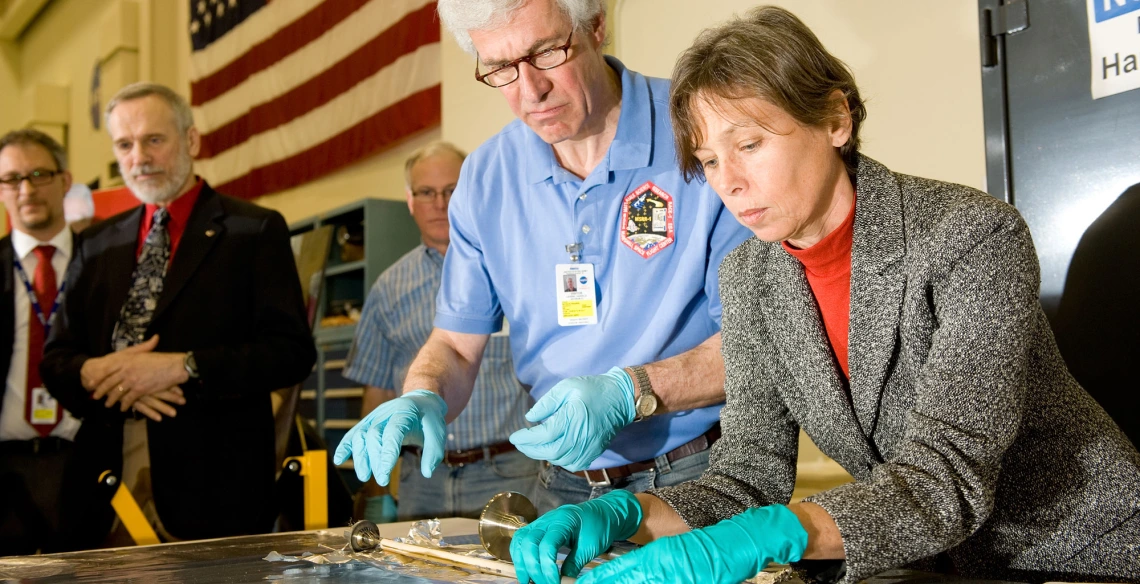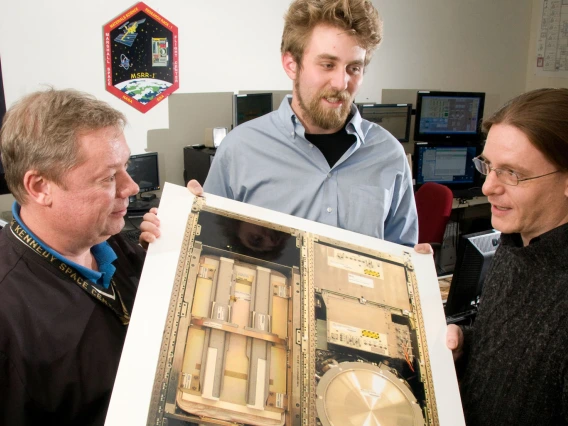UA Engineering Test Sample Returns from Space for Analysis
UA engineers will conducts tests on materials sample created in space.

Petra Neuhause, right, and Harold Lenski, second from right, both with Astrium Germany, open UA's sample, the first U.S. sample cartridge processed in the Materials Science Research Rack aboard the International Space Station. The sample was returned to Earth on space shuttle mission STS-130. (Photo: NASA/MSFC/David Higginbotham)
The first American research sample processed in the International Space Station's Materials Science Laboratory was opened for study March 16 at NASA's Marshall Space Flight Center in Huntsville, Ala.
The sample consisted of an aluminum-silicon alloy that was melted and resolidified in orbit. The experiment was controlled by commands from the ground and monitored by David Poirier, Robert Erdmann and Matthew Goodman of UA Department of Materials Science and Engineering.
Scientists will compare the sample to an Earth-based recreation of the experiment conducted by Surendra Tewari of Cleveland State University in Ohio. Tewari will join the UA team to analyze and dissect the sample from orbit.
Research conducted in the microgravity environment found aboard the International Space Station enables scientists to better understand the processing, structure and properties of materials.
This better understanding will lead to improved processing techniques and defect control when materials are manufactured here on Earth. NASA said in a press release that understanding how to optimize the processing of materials can lead to enhanced materials which result in innovations such as increased speed in computers, reduced pollution and improved fiber optics, and enable medical breakthroughs to cure disease.
"Our objective is to optimize the processing of materials today and create innovative materials with enhanced properties for the future," said Frank Szofran, a microgravity materials science project manager and discipline scientist in Marshall's Materials and Processes Laboratory."
"The goal of studying materials and substances in space is to develop a better understanding of thermal and chemical properties," said Szofran. "Equipped with this knowledge, we can reliably predict conditions that are vital to develop improved materials on Earth."
"Materials science applies the theoretical framework of physics and insights from the fields of chemistry, engineering, mathematics and computer science to build links between structure, processing and properties," said Francis Chiaramonte, program executive for physical sciences at NASA Headquarters in Washington. "These links can lead to the improvement of the properties of known materials, such as steel or silicon, and the development of new materials."


